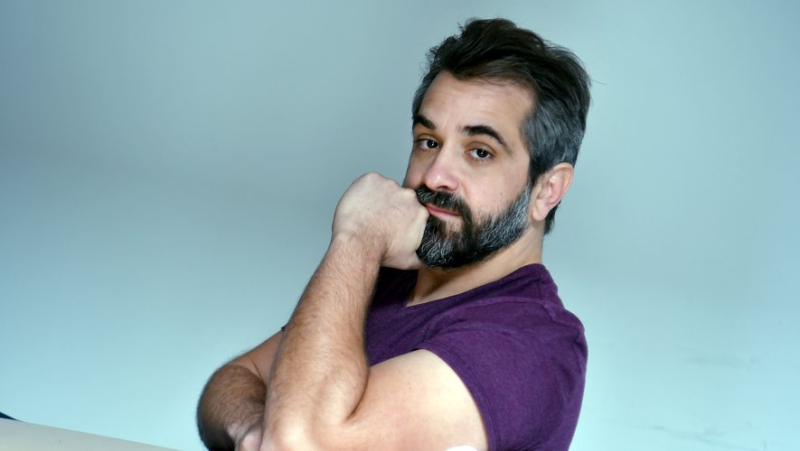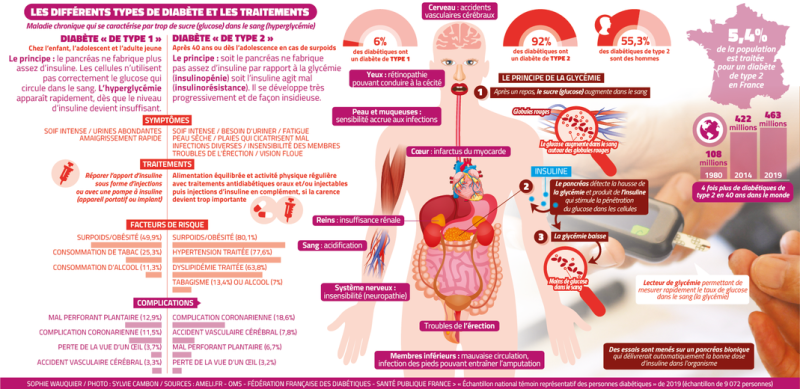“Diabetes adapts to my life”: how the latest generation of insulin pumps has transformed Paul Barraud’s daily life

Paul Barraud: “I don't forget that I'm still sick”. Midi Libre – ALEXIS BETHUNE
The head of the Midi Libre agency in Alès, a type 1 diabetic, has just been equipped with a 'closed loop" system, which is similar to the functioning of a failing pancreas. Since then, he "has been revived".
“I received my new pump on October 10th, with the closed loop, I'm alive again!” Paul Barraud, 38, head of the Midi Libre agency in Alès, diagnosed with type 1 diabetes in 2008, equipped with an insulin pump in 2017, is enthusiastically experiencing the latest technological revolution in treatments: the so-called “closed loop” artificial pancreas via an “Omnipod” patch pump, with an automated insulin administration system.

Understand everything about diabetes. Midi Libre – SOPHIE WAUQUIER
“I don't forget that I'm still sick”, he explains. Type 1 diabetes, which affects some 300,000 people in France, “is a disease that cannot be cured”: destroyed by an autoimmune disease, the cells of the pancreas responsible for producing insulin, and thus regulating the level of glucose in the blood, malfunction for a lifetime. With poorly controlled diabetes, the patient lives to the rhythm of hyper and hypoglycemia with devastating consequences, corrected by a treatment that continues to progress.
Like Paul Barraud, 50 patients have received, since September, the latest generation of insulin pumps (there are five types) that imitate the functioning of the pancreas, at the Nîmes University Hospital: “We are at the cutting edge of technology, but it is not an artificial pancreas”, emphasizes Valéria Cosma, responsible for the implementation of closed-loop systems.
The principle: “A sensor constantly measures the level of glucose in the blood and the amount of insulin sent by the pump, equipped with a self-learning algorithm, which constantly adapts. At each meal, I weigh my carbohydrates and the pump does its calculations. I can also program the pump to adapt to my daily life, if I know I'm going to have a good meal, if I have a sporting activity… we can do like everyone else, we just have to tell the machine”, explains the journalist, who has long lived to the rhythm of “dextros”, “you had to prick your finger six times a day to draw your blood sugar curves”.
“An adaptation minute by minute”
The system is minimally invasive, and requires “no severe surgery”, “everything is outdoors” : “The patch pump, stuck to the skin, looks like a big bandage measuring five centimetres by three. I am no longer the one adapting my life to diabetes; diabetes adapts to my life. If the blood sugar curve rises, I automatically receive more insulin. And if my curve falls, the pump stops,” details Paul Barraud.
“Before, there was an hour-by-hour adaptation, now it's minute-by-minute. The pomI am still a machine, I can have hypoglycemia and hyperglycemia, we are never safe from a stressful moment that unbalances everything, but my life has completely changed. Normal blood sugar is 1 gram of carbohydrates per deciliter of blood. Until now, 50% of the time, I went up to 2.5 grams, and I had two or three severe hypoglycemias per week. Now, I no longer have hypoglycemia and I have two or three hyperglycemias that are quickly controlled”, details the journalist, who has assiduously returned to indoor sports: “This is the first time in ten years that I have done sports without problems”.
He “sleeps better”, too, and has “become familiar with this new model in three days”.
“When I was first offered a pump, I didn't want one. I imagined that I would have a “Game Boy” on my belt, with wires around it. We must not hesitate and believe in progress, concludes Paul Barraud, for whom each advance has been a form of liberation”.
Concerns about care
Dr. Cosma is already announcing the next developments: “The next artificial intelligence will be able to adapt to what we eat or the effort we produce, but we will also have other types of pumps, with insulin and glucagon. Finally, we will be able to delay the onset of type 1 diabetes in people at risk, thanks to monoclonal antibodies, Sanofi has just made announcements in this direction” , indicates the doctor. Not everyone will be eligible. Already, in the Gard, barely one in two type 1 diabetics lives with an insulin pump.
And unknowns remain about the financial support, currently total, of these new devices: “Service providers are withdrawing”. And even about medical support : “There are not enough doctors to take care of patients, and these new systems require training, for medical teams and for the patient”, warns Dr. Ingrid Julier, diabetologist at the Nîmes University Hospital.
I subscribe to read the rest




